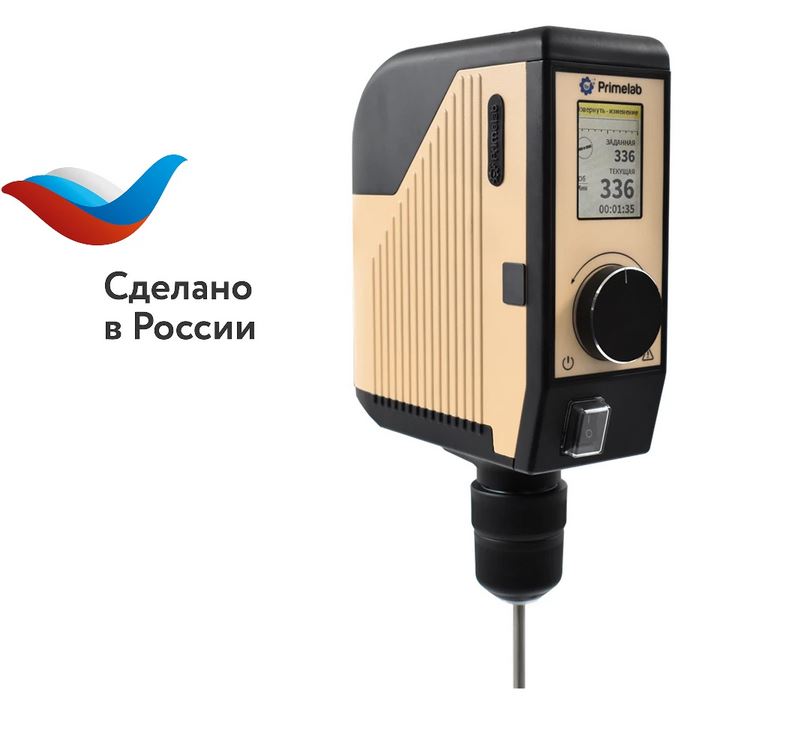Catalog
Metrology
525 products
View:
- Selected: 0Areas of use
- Selected: 0Item names
- Selected: 0Manufacturer
- Selected: 0Made in
- Selected: 0Additional
View:
525 products
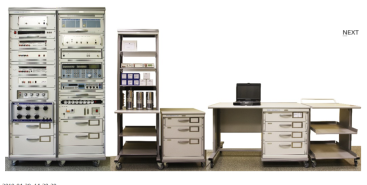
Verification module PM-9
The composition of the PM-9 calibration module:
Universal voltmeter calibrator H4-12 (2 pcs.);
Variable voltage calibrator H5-5A;
A measure of the stress ratio H4-8;
AC voltage voltmeter VK3-78A;
Generator-calibrator of harmonic signals SK6-122;
The meter-calibrator of the harmonic coefficient SK6-20A;
AC power source B2-7 (2 pcs.);
The measure of DC electrical resistance is multi-valued MS3070-2;
The measure of DC electrical resistance is multi-valued MS3055;
Decadal high-resistance resistance magazine M-109R;
Single-digit electrical resistance measures MS3080 (0.001; 0.01; 0.1 ohms);
Electrical resistance measures unambiguous MS3050M (1, 10, 100, 1000, 10000, 100000 Om);
The measure of electrical resistance is unambiguous P4013;
The measure of electrical resistance is unambiguous P4023;
The measure of electrical resistance is unambiguous P4033;
PC, printer;
Basic load-bearing structures (BNC).
Technical specifications
Measuring ranges of electrical quantities:
Constant electrical voltage DC from 1 MV to 1000 V
AC alternating electric voltage in the frequency range of 10 Hz ... 1 MHz from 10 mV to 1000 V
Alternating electric voltage high-frequency VRF in the frequency range of 10 Hz ... 2000 MHz from 10 mV to 100 V
Harmonic coefficient in the frequency range of 10 Hz ... 200 kHz from 0.001 to 100 %
Ranges of reproduction of electrical quantities:
Constant electrical voltage DC from 1 nV to 1000 V
AC alternating electric voltage in the frequency range of 10 Hz ... 1 MHz from 3 MV to 1000 V
Alternating electric voltage high-frequency VRF in the frequency range of 1 MHz ... 2000 MHz from 3 MV to 3 V
DC electric current from 1 µA to 20 A
The power of alternating electric current in the frequency range from 0.1 Hz to 10 kHz from 1 µA to 20 A
Electrical resistance from 0.001 ohms to 11
ohms Harmonic coefficient in the frequency range from 10 Hz to 200 kHz from 0.001 to 100 %
Measurement errors of electrical quantities:
Constant electrical voltage DC ± (0.0011 ... 4.0) %
AC alternating electric voltage, in the frequency range 10 Hz ... 1 MHz ± (0.0055 ... 1.2) %
Alternating electric voltage high-frequency VRF in the frequency range 1 MHz ... 2000 MHz ± (0.2 ... 6.0) %
Harmonic coefficient in the frequency range from 10 Hz to 200 kHz ± (0.0008 ... 2.0) %
Errors in the reproduction of electrical quantities:
Constant electrical voltage DC ± (0.0011 ... 4.0) %
AC alternating electric voltage in the frequency range 10 Hz ... 1 MHz ± (0.0055 ... 4.0) %
Alternating electric voltage high-frequency VRF in the frequency range 1 MHz ... 2000 MHz ± (0.6 ... 10.0) %
DC power ± (0.0033 ... 0.5) %
The power of alternating electric current in the frequency range from 10 Hz to 10 kHz ± (0.055 ... 1.0) %
Electrical resistance ± (0.001 ... 1.0) %
Harmonic coefficient in the frequency range from 10 Hz to 200 kHz ± (0.006 ... 2.0) %
General technical characteristics:
The area occupied by the module is 6-12 m2
Weight, not more than 430 kg
Power supply voltage from 198 to 242 V with a frequency of (50 ± 0.5) Hz
Power consumption, no more than 2000 VA
TEKHNOYAKS
Moscow
Produced in: Moscow
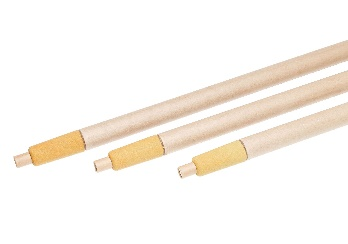
EVRAZOXY For high oxidation
Purpose: Measurement of oxygen activity in molten steel
Scope of application: Oxygen converters, electric arc furnaces, induction furnaces, blast furnaces, casting buckets
Measurement range:
from 50 to 2000 ppm O2 - metal oxidation
from 1000 to 1800 °C - metal temperature
from 0.010 to 0.200% - carbon content
Accuracy: 0 + 3°C at 1554°C;
(from 5 to 10) mV (depending on the level of oxygen activity)
Measurement time: 8 sec
Tube Length: from 100 to 1500 mm (other lengths are available on request)
Slag Cap: Steel, cardboard
Type of NSH: B, S, R
EVRAZPRIBOR
Lipetsk
Produced in: Lipetsk

MKS‑AT6101DR SPECTROMETER (STATIONARY VERSION)
▪ Measurements without sampling in geometry 4π
▪ Intelligent detection unit in an airtight container
▪ The possibility of further detailed processing of the measured data using specialized software
Atomtekh
Minsk
Produced in: Belarus, Minsk
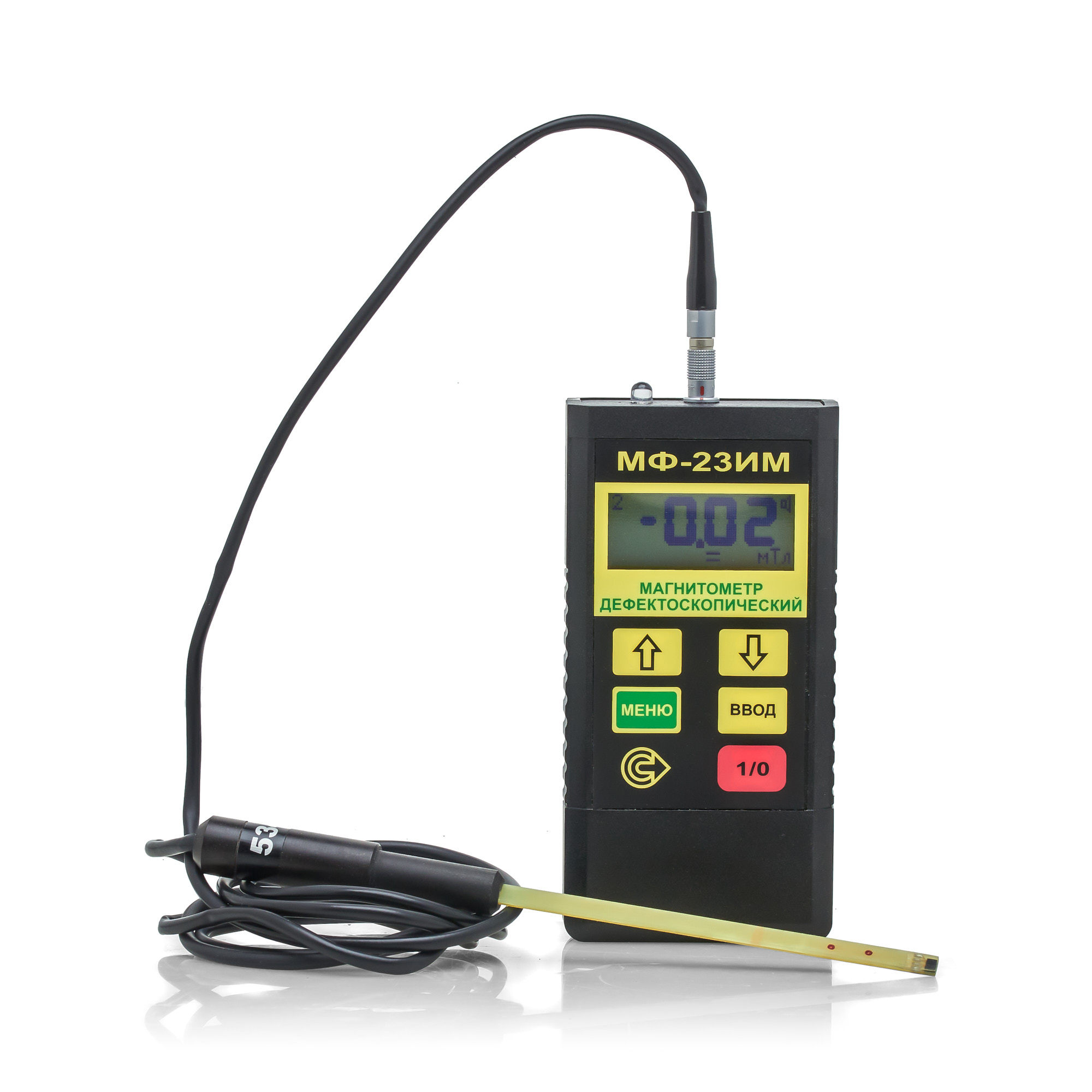
MF-23IM Flaw detection magnetometer
from
193 200 ₽
The MF-23IM flaw detection magnetometer allows you to determine the compliance of the ratio of the tangential and normal components of the magnetic field strength during magnetic particle testing using both the applied field method (AFM) and the remanent magnetization method (RMM) in accordance with the requirements of current regulatory documentation.
The MF-23IM flaw detection magnetometer meets the requirements in the field of non-destructive testing for the main industries: nuclear, energy, oil and gas complex, general and special engineering, railway transport, aerospace industry, elevator and crane facilities.
The flaw detection magnetometer is included in the State Register of Measuring Instruments (GRSI) under No. 20106-00. The magnetometer (milliteslameter) is also included in the register of measuring instruments, testing equipment and measurement methods used at JSC Russian Railways. The flaw detection magnetometer MF-23IM from the manufacturer is used to measure the parameters of constant, variable (industrial frequency) and pulsed magnetic fields when testing ferromagnetic products using the magnetic particle method, as well as to control the level of industrial interference. Specifications.
Magnetic field induction (strength) measurement range: - constant and variable (amplitude and average values) 0.5…1000 mT (4…8000 A/cm) - pulsed (amplitude value) 2…1000 mT (18…8000 A/cm) Indication of measurement results digital or digital + graphic Indicator liquid crystal display Power supply from 1 PP3 battery Current consumption, mA, no more than 15 Memory capacity for storing results 4080 Communication with a computer via infrared channel Dimensions of the electronic unit, mm, no more than 120x60x25 Weight of the electronic unit with battery, g 150
The minimum dimensions of the Hall transducer for the MF-23IM magnetometer make it possible to measure the induction and magnetic field strength in grooves, grooves, corner transitions, i.e. in those areas of the controlled product that are stress concentrators and the most dangerous from the point of view of crack formation; · Measurement of pulsed magnetizing field with pulse duration from 0.5 ms; · Small measurement error (see technical specifications table) · Compact size and low power consumption;
· The magnetometer has 2 modes for displaying measurement results – digital and graphic). The MF-23IM magnetometer in graphical display mode allows you to detect a demagnetizing pulse by displaying its shape and amplitude on a graphic display, as a result of which changes can be made to the magnetization circuit in a timely manner. · The software of the MF-23IM magnetometer allows you to flexibly configure not only the response thresholds, but also the time base, which allows you to tune out false indications caused by reverse emissions of the magnetic field or electromagnetic interference from operating power equipment (magnetizing devices or magnetic particle flaw detectors).
· Determination of the effective magnetization region, within which the tangential component of the magnetic field strength is sufficient for magnetic particle testing, and the ratio of the normal and tangential components of the magnetic field strength is less than or equal to 3. · Checking the mode of magnetization/demagnetization of test objects for compliance with the methodology/technological instructions for magnetic particle testing for a given object.
BASIC SET: Electronic unit Converter 1 Converter 2 Caliber PP3 battery CD with program Case Flaw detection magnetometer MF-23IM. Passport
The flaw detection magnetometer is included in the State Register of Measuring Instruments (GRSI) under No. 20106-00. The magnetometer (milliteslameter) is also included in the register of measuring instruments, testing equipment and measurement methods used at JSC Russian Railways. The flaw detection magnetometer MF-23IM from the manufacturer is used to measure the parameters of constant, variable (industrial frequency) and pulsed magnetic fields when testing ferromagnetic products using the magnetic particle method, as well as to control the level of industrial interference. Specifications.
Magnetic field induction (strength) measurement range: - constant and variable (amplitude and average values) 0.5…1000 mT (4…8000 A/cm) - pulsed (amplitude value) 2…1000 mT (18…8000 A/cm) Indication of measurement results digital or digital + graphic Indicator liquid crystal display Power supply from 1 PP3 battery Current consumption, mA, no more than 15 Memory capacity for storing results 4080 Communication with a computer via infrared channel Dimensions of the electronic unit, mm, no more than 120x60x25 Weight of the electronic unit with battery, g 150
The minimum dimensions of the Hall transducer for the MF-23IM magnetometer make it possible to measure the induction and magnetic field strength in grooves, grooves, corner transitions, i.e. in those areas of the controlled product that are stress concentrators and the most dangerous from the point of view of crack formation; · Measurement of pulsed magnetizing field with pulse duration from 0.5 ms; · Small measurement error (see technical specifications table) · Compact size and low power consumption;
· The magnetometer has 2 modes for displaying measurement results – digital and graphic). The MF-23IM magnetometer in graphical display mode allows you to detect a demagnetizing pulse by displaying its shape and amplitude on a graphic display, as a result of which changes can be made to the magnetization circuit in a timely manner. · The software of the MF-23IM magnetometer allows you to flexibly configure not only the response thresholds, but also the time base, which allows you to tune out false indications caused by reverse emissions of the magnetic field or electromagnetic interference from operating power equipment (magnetizing devices or magnetic particle flaw detectors).
· Determination of the effective magnetization region, within which the tangential component of the magnetic field strength is sufficient for magnetic particle testing, and the ratio of the normal and tangential components of the magnetic field strength is less than or equal to 3. · Checking the mode of magnetization/demagnetization of test objects for compliance with the methodology/technological instructions for magnetic particle testing for a given object.
BASIC SET: Electronic unit Converter 1 Converter 2 Caliber PP3 battery CD with program Case Flaw detection magnetometer MF-23IM. Passport
RII MNPO SPEKTR
Moscow
Produced in: Moscow
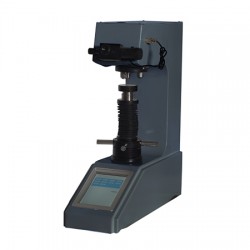
Metolab 502 Vickers Hardness Tester
The stationary METOLAB 502 hardness tester is a modification of the METOLAB 501 series device, equipped with a display and a digital micrometer that allows you to automatically read values without the need for conversion tables. The device also automatically calculates the hardness of the samples.
The METOLAB 502 microhardometer is designed to measure the hardness of various samples and products (steels, cast iron, non-ferrous metals and soft alloys) according to the Vickers (HV) and Knup (HK) scales in full compliance with GOST R ISO 6507-1-2007. The device has high accuracy, performs measurements in a wide range and with high repeatability.
The stationary automatic METOLAB 502 hardness tester is included in the State Register of Measuring Instruments of the Russian Federation (GRSI) under the number 66668-17 and comes with a certificate of primary verification (on request).
Distinctive features of the stationary METOLAB 502 Micro-Vickers hardness tester:
Built-in digital micrometer that allows you to automatically read readings without the need for translation tables;
Automatic hardness calculation;
Simple and intuitive control of the device, fully Russified menu;
Wide range of measured values – from 5 to 2500 HV;
A wide range of applied test loads - 0.09807 N (10 g), 0.2452 N (25 g), 0.4903 N (50 g), 0.9807 N (100 g), 1.961 N (200 g), 2.942 N (300 g), 4.904 N (500 g), 9.80 N (1 kg);
Large and bright LCD display.
Basic delivery package:
Stationary METOLAB 502 Micro-Vickers Hardness Tester;
Standard hardness sample – 2 pcs.;
Flat desktop;
Large flat desktop;
V-shaped desktop;
Micrometer;
Diamond indenter with an angle of 136°;
User Manual.
Metolab
Moscow
Produced in: Moscow
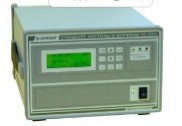
Rubidium frequency and time standards H1-1011
The modular construction principle makes it easy to adapt the devices to the specific requirements of the consumer. The standards are available in four versions – H1-1011, H1-1011/1, H1-1011/2 and H1-1011/3, which differ in metrological characteristics and a set of installed devices (modules). The built-in diagnostic system allows you to quickly determine the operability and condition of the main devices of the standards.
On the front panel of the devices H1-1011 and H1-1011/2 there is an LCD display and a control panel, with which you can quickly receive information about the current parameters of the devices included in the devices and adjust the frequency of the output signals.
The H1-1011 and H1-1011/2 standards can receive chronometric information from GLONASS and GPS satellite radio navigation systems and use it to synchronize the local time scale and automatically adjust the actual frequency value of the built-in highly stable rubidium frequency standard.
The composition of the standards H1-1011 and H1-1011/2 includes:
rubidium frequency standard H1-1014;
MPR-01 satellite radio navigation systems receiver module;
amplifier module for highly stable sinusoidal signals (at the customer's choice):
MUS-01 (3 independent outputs 10 MHz, connector type SR-50-73FV);
MUS-02 (3 independent outputs of 5 MHz, connector type SR-50-73FV);
MUS-03 (3 independent outputs of 1, 5 and 10 MHz, connector type SR-50-73FV);
MUS-04 (6 independent outputs of 1, 5 and 10 MHz in any combination at the customer's choice, SMA connector type);
MS synthesizer module with software (SMA connector type) instead of an amplifier module (at the customer's request).
The scope of delivery (at the request of the customer) includes an antenna for the SRNS receiver as part of:
antenna unit;
mounting device;
antenna cable (maximum length 60 m).
The H1-1011/1 and H1-1011/3 standards include:
the rubidium frequency standard H1-1013;
two modules of amplifiers of highly stable sinusoidal signals (at the customer's choice):
MUS-01 (3 independent outputs 10 MHz, connector type SR-50-73FV);
MUS-02 (3 independent outputs of 5 MHz, connector type SR-50-73FV);
MUS-03 (3 independent outputs of 1, 5 and 10 MHz, connector type SR-50-73FV);
MUS-04 (6 independent outputs of 1, 5 and 10 MHz in any combination at the customer's choice, SMA connector type);
MS synthesizer module with software (SMA connector type) instead of an amplifier module (at the customer's request).
Ruknar
Nizhny Novgorod
Produced in: Nizhny Novgorod

Low-frequency signal generator G3-131A
Technical specifications:
The waveform is sinusoidal, rectangular (TTL)
Frequency range from 2 Hz to 2 MHz
Frequency setting error ±0.05%
Frequency instability ±0.02% in 15 min
Signal amplitude ±5 V at 600 ohm load
±10 V without load
Limits for adjusting the output signal level from 1 mV to 3.75 V (scr) at a load of 600 ohms
from 2 mV to 7.5 V (scz) without load
Signal level unevenness ± 2% at frequencies from 20 Hz to 200 kHz
relative to 1 kHz ± 5% at frequencies from 200 kHz to 2 MHz
Harmonic coefficient ± 0.3% at frequencies from 2 to 20 Hz
± 0.2% at frequencies from 20 Hz to 100 kHz
±1% at frequencies from 100 kHz to 2 MHz
Parameters of the rectangular (TTL) signal form log. "1" 3 2.4 V; log. "0" ≤ 0.4 V the
duration of the front, the cutoff is not more than 100 ns
Operating temperature range from minus 10 °C to + 40 °C
Power supply ~230 V, 50 Hz; 10 V×A
Dimensions; weight 210×71×255 mm; 2
MNIPI
Minsk
Produced in: Belarus, Minsk
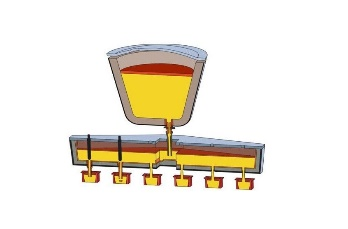
Continuous measurement of temperature in the industrial area
Appointment: the continuous measurement system allows for continuous measurement of the heating temperature of the industrial bucket, to improve the stability and reliability of measuring the temperature of liquid metal. Due to the fixed measurement position, the system eliminates errors due to the human factor. This method of measuring temperature was researched and invented on the theory of an absolutely black body. The principle of the temperature measurement system is the immersion of a temperature probe into molten steel to determine the temperature. The temperature probe made of an absolutely black body is designed in a special way to receive an infrared radiation signal corresponding to the temperature of molten steel.
Scope of application: Intermediate bucket
Measuring range:
Warming up the promkovsh: from 800°C to 1400°C; Molten steel: from 1400°C to 1600°C
Accuracy: Preheating of the promkovsh 7 ° C; Molten steel: 3 ° C
Response time: Hot response time 75 sec;
Cold response time 4 min
Measuring probe length: 964mm, 1100mm
Durability of measuring probes: 12 hours, 24 hours, 48 hours
Number of thermal shocks: up to 5 times
EVRAZPRIBOR
Lipetsk
Produced in: Lipetsk
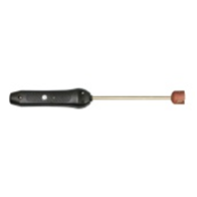
High-temperature smart surface probe L=300 mm SZPVV.300P with built-in flash memory
from
15 663 ₽
High-temperature smart surface probe L=300 mm SZPVV.The 300P with built-in flash memory is designed to measure the temperature of various materials by directly contacting the probe with the measuring object and transmitting the measured value via Bluetooth to devices with the ThermoMonitor, Android program installed.
Operating conditions of the SZPVV smart probe.300P
Ambient temperature, °C: -20...+55.
Relative humidity, %: not more than 80 at T=35 °C.
Atmospheric pressure, kPa: 86...106.
Functionality of the SZPVV smart probe.300P
Measurement of physical quantities with a resolution of 0.01.
Recording of measured values at intervals from 5 seconds to 23 hours 59 minutes 59 seconds (only smart probes with built-in memory).
Transmitting data about measured physical quantities via Bluetooth to a device with the ThermoMonitor, Android program installed.
Transmitting information about the state of charge of the built-in battery via Bluetooth to a device with the ThermoMonitor, Android program installed.
Automatic transition to sleep mode after 50 seconds.
The ability to connect an external power supply.
Possibility of calibration.
TEKHNO-AS
Kolomna
Produced in: Kolomna, Moscow region
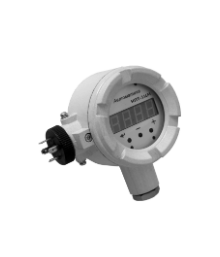
Temperature measuring digital converters with RS-485 interface NPT-1TSM, NPT-2TSM
1 supp.
NPP AVTOMATIKA
Vladimir
Produced in: Vladimir
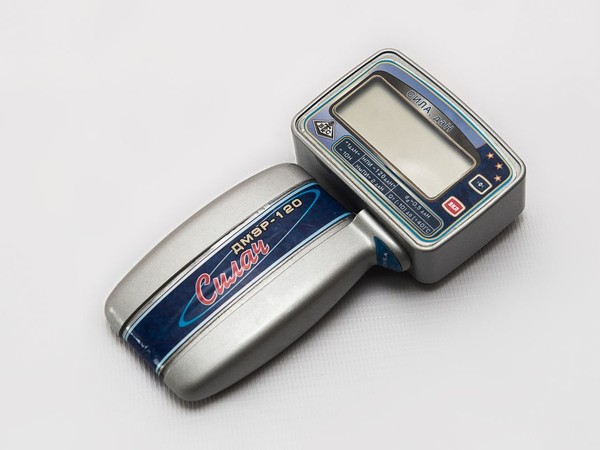
DMER-120-0,5 medical electronic manual dynamometer
from
7 600 ₽
TVES
Tulinovka
Produced in: Tambov Region, Tulinovka
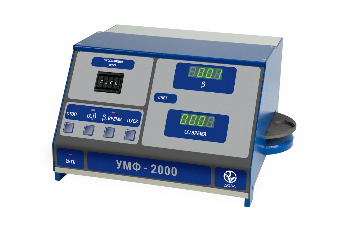
Alpha-beta radiometer for measuring small activities UMF-2000
A low-background alpha-beta radiometer with a silicon detector, widely used for measuring small activities. It is recommended for measuring the total alpha and beta activity of natural and drinking waters, as well as for measuring the activity of alpha-emitting radionuclides by spectrometric method.
Purpose:
measurement of the total activity of alpha-emitting nuclides in "thick" and "thin" counting samples of environmental objects;
measurement of the total activity of beta-emitting nuclides in counting samples of soil samples, water samples, air filters and samples obtained by selective radiochemical extraction;
measurement of alpha activity of nuclides in counting samples obtained after radiochemical preparation by radiometric method (if available);
measurement of alpha activity of nuclides in counting samples obtained after radiochemical preparation by the spectrometric method (if there are techniques and a set of spectrometric "UMF - Spectrum").
Doza
Zelenograd
Produced in: Moscow
